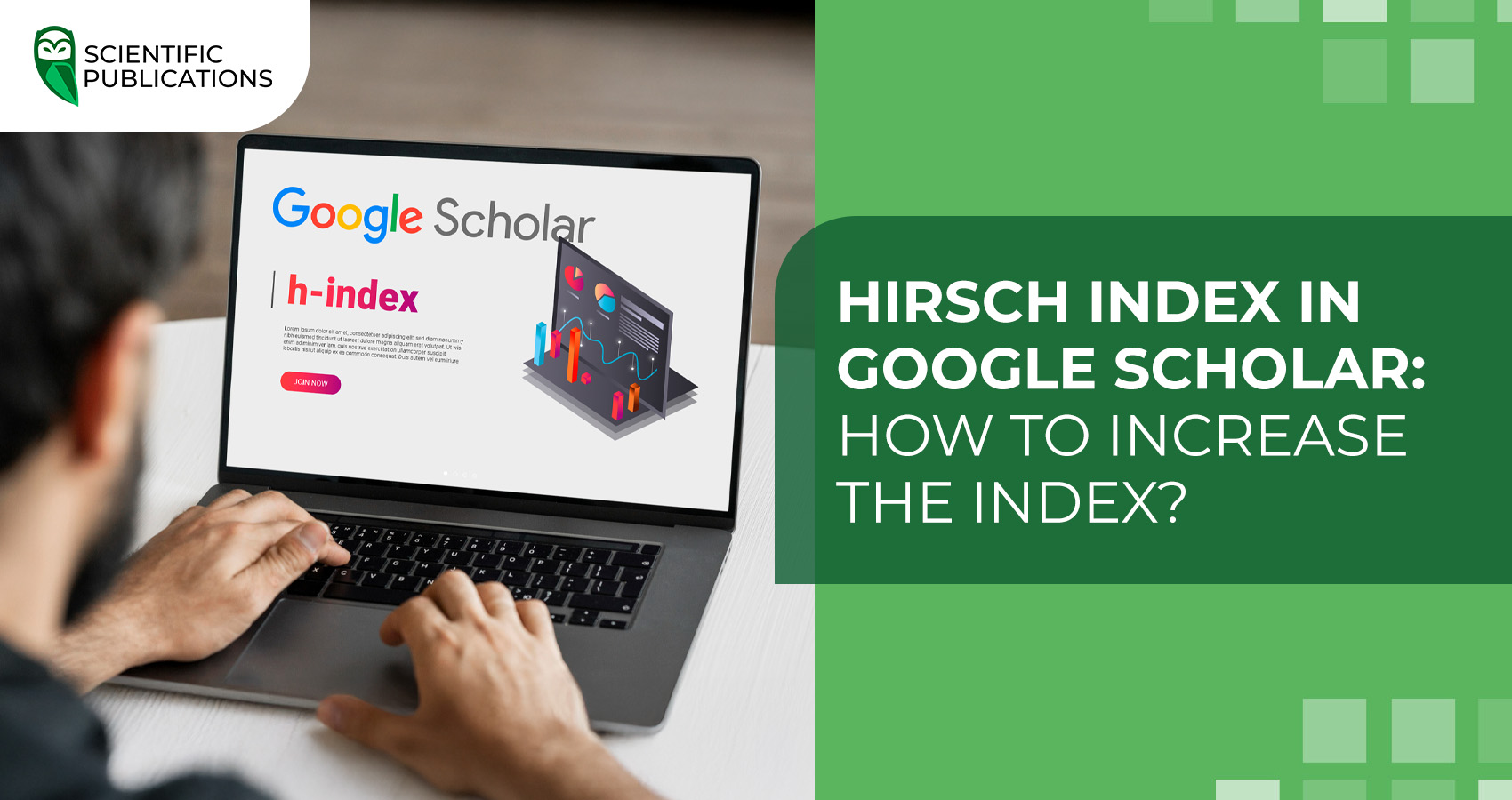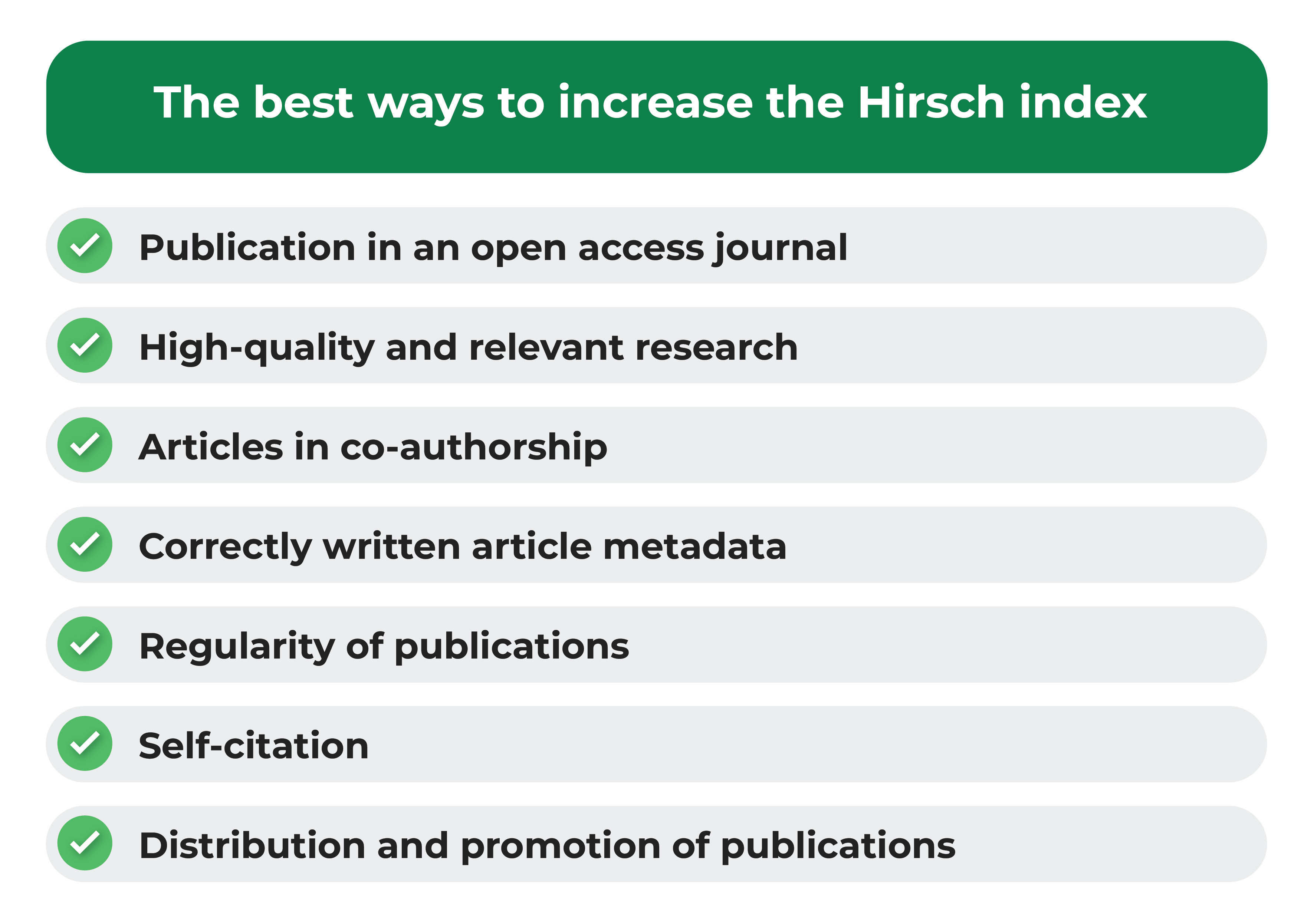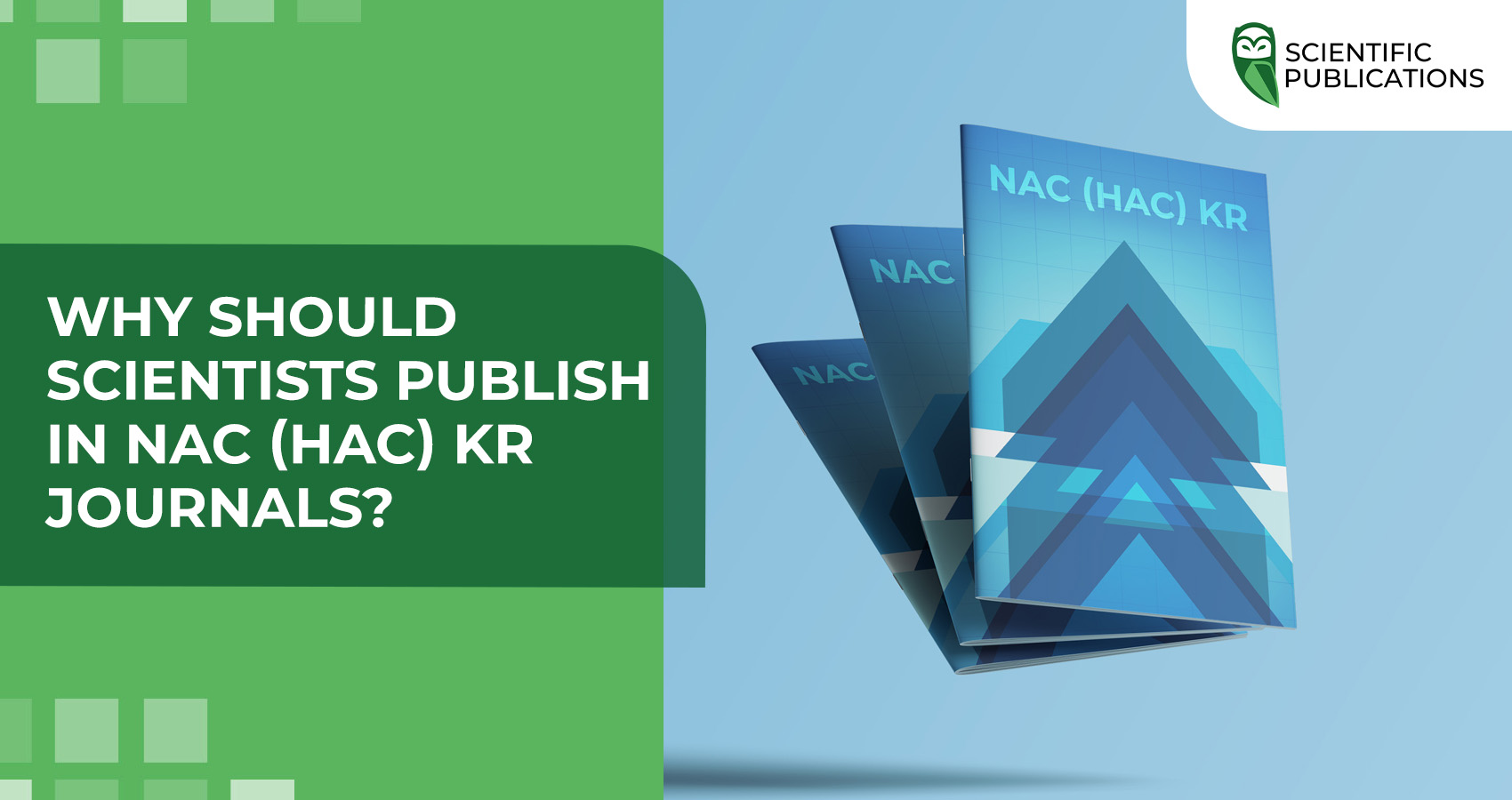A high Hirsch index score indicates the popularity, influence, and relevance of scientific research, as well as an indicator of a researcher's productivity. But among other things, a high HI score affects a researcher's place in international rankings and is essential for career development. In today's article, we will look at how to increase the Hirsch index on the Google Scholar platform.

The Hirsch index
The Hirsch index (h-index) is one of the key scientometric indicators used to evaluate the performance of both scientists and institutions, organisations, higher education institutions, etc.

Publication in an open access journal
Publishing scientific articles in open access journals opens up the possibility of a much wider dissemination of research results. This format provides free and free access to scientific content for researchers, teachers, students and other interested parties in different countries. This helps to increase the number of views and increases the chances of citation. As a result, open access contributes to a more dynamic development of science, allowing research results to be integrated into the global scientific community faster.
High-quality and relevant research
To improve your performance, you need to focus not only on the quality but also on the relevance of your publications. It is modern, topically relevant articles that are of interest to the scientific community and are more often used in further research. Papers that meet the current challenges of science and are published in recognised scientific journals have a much higher chance of being cited, which has a positive impact on the author's scientific reputation.
Articles in co-authorship
It is advisable to establish professional contacts with experienced scientists who have high scientometric indicators and recognition in their field. Joint research and publications with such experts help to increase the credibility of your scientific work. Such a scientific partnership significantly increases the chances of citation of published materials, which, in turn, contributes to the growth of the h-index. In addition, collaboration with reputable scientists expands the audience that may be interested in your results and increases the impact of your research in the relevant scientific field.
Correctly written article metadata
The main metadata includes the title of the scientific article, abstract, keywords, and information about the author. It is very important to check this data carefully, avoiding mistakes, and always follow the same spelling of the first name, surname, and initials, especially if they are in a foreign language. The selection of keywords should be as accurate as possible and reflect the nature and relevance of the research. Whenever possible, and taking into account the requirements of a particular journal, it is recommended to integrate keywords into the abstract of the article. This will significantly increase its visibility and accessibility to interested readers.
Regularity of publications
It is recommended to develop a clear publication plan to maintain regular scientific activity. Frequently adding new articles to your Google Scholar profile helps to keep it relevant and attractive. The platform's algorithms give preference to active profiles and frequent updates, which increases the visibility of your publications and, therefore, increases the chances of them being read and cited by other researchers. Thus, a systematic approach to publishing helps to strengthen your reputation and expand your scientific impact.
Self-citation
Self-citation can be a useful way to increase your h-index, but it is important to adhere to the established ethical standards of publishing. It is recommended that the share of self-citations should not exceed approximately 12-13% of the total number of references in a paper, which helps to avoid artificially inflating scientometric indicators. Therefore, it is important to take a balanced approach to self-citation, using it only where it is really justified and contributes to the logic of the scientific work.
Dissemination and promotion of publications
The active use of social media is a powerful tool for improving scientometric indicators, as platforms such as Mendeley, LinkedIn, Twitter, and Facebook allow you to popularise your own scientific results among a wide audience. In addition, the international social network ResearchGate provides an opportunity to post your work, receive professional feedback, participate in thematic discussions and establish contacts with colleagues, which contributes to the wider dissemination of research and increases the chances of citation.
Get a guaranteed increase in the Hirsch index in Google Scholar with Scientific Publications! We conclude a formal cooperation agreement with our clients that protects your rights and guarantees the performance of the service. Get a free consultation with our manager by filling out the form below and ask all your questions. Let's reach new heights together!





